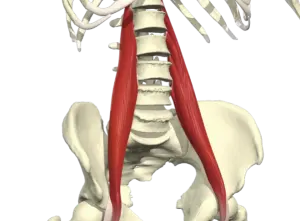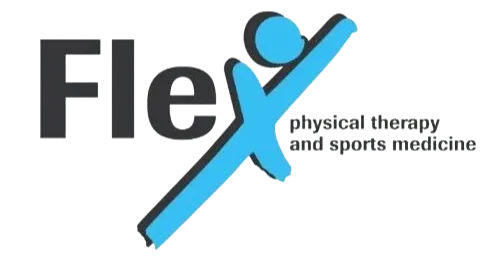Mike Uhrlaub here; I’ve been a back-pain specialists for over 22 years! I’d like to talk to you about what lower back and sciatica pain actually is. One of the most common complaints we see in our clinic is lower back pain. Lower back-pain and sciatica describes any irritation or pain occurring from the lumbar spine, pelvis, or hips. This often causes a pinching of the sciatic nerve which is the largest nerve coming down the back of the leg. If that becomes irritated, it doesn’t move well and causes pain that shoots down the leg from the lower back.

Causes of Lower Back-Pain
- Herniated Discs
- Bulging Discs
- Arthritis of the Spine
- Muscle Strains
- Sprained Ligaments
- Spondylolisthesis
- Spinal Stenosis
- Bone Spurs
Spinal Stenosis is the narrowing around the spinal cord and nerve roots.
All of these problems, including sacroiliac joint problems, can lead to lower back-pain. If this pain starts to travel down the leg, that is considered sciatica.
What Causes This Pain?
The basic cause for all of these conditions occurs from hyperactivity of the psoas muscles. The psoas muscle is the muscle that comes from the lumbar and sides of the spine. It travels down and connects with what’s called the iliacus: Which fills in the pelvis. Then it comes through the lumbar lower abdominal area and passes through the groin to attach to the femur. The job of that muscle, PSOAS, is to bring your hips and leg up.
We call it a hip flexor. But because we sit so much throughout the day that muscle becomes shortened and what we call hypertonic. This makes it really tight and tends to create compression on the spine. In turn, on the backside because of the excessive sitting and activity of the psoas muscle, your gluteal muscles start to shut off. (Gluteus Maximus AKA Butt Muscle). It becomes weak and doesn’t stabilize the lower back like it should. This can lead to back pain and sciatica pain.

Quadratus Lumborum
The quadratus lumborum runs alongside the vertebrae, across the ribs, and along the top of the pelvis. It tries to counteract what is happening with the PSOAS causing it to go into a spasm. In some cases it becomes hypertonic and very tight. All of these things lead to the increased pain, pinching of the nerves, pain going down the leg, increased irritation, and more wear and tear on the spine. We like to call all these things that contribute to low back and sciatica pain imblanaces.
Imbalances
These are a weakness which leads to tightness that causes imbalances between the front and back. So, you have this weakness which leads to tightness. The tightness then leads to imbalances between the front and back. These imbalances are what leads to:
- Chronic pain
- Irritation
- inflammation
- early wear and tear
- Early compression
- Wearing of the discs
- Formation of arthritis
All of these imbalances cause lower back and sciatica pain.
More Than Just Pain
Many people will feel the pain just in their back, while others will have pain that travels down the leg, known as sciatica pain. Those with this pain will start experiencing difficulty with standing, walking, pushing, pulling, reaching and lifting. Everyday tasks become limited and more painful to accomplish. The pain affects a person’s ability to go grocery shopping, do yard work, and even limits a person’s ability to travel!
More often than not this pain is persistent. It does not just go away on it’s own. Due to the inability to perform simple functions people experiencing low back and sciatica pain often begin to feel frustrated, angry, and irritated. It is also not uncommon that people tend to have a loss of self-confidence if they have been dealing with this pain and limited mobility for awhile. They’re not able to go to their kids or grandkids games because sitting in the bleachers without support increases their pain levels significantly. They have trouble sleeping at night. You just can’t be there for your family and friends. Many people have tried a lot of different treatments, ointments, chiropractic treatment, or massage therapy.

So, What Do You Do?
Some of you may have tried simple exercises and stretches you find online or on YouTube. Maybe you have gone so far as medications, injections, and even surgery. If you don’t address the imbalances, most of these just don’t work. You might feel good for a little while, but as you probably have experienced…. the pain returns. To fix lower back-pain and sciatica, you have to address these imbalances.
You have to address the hypertonic PSOAS.
- Get that hip-flexor to shut off.
- Turn off the quadratus lumborum muscles.
- Get your gluteal muscles turned on.
This means you must get them more active. You have to rebalance that entire system!
You should definitely start addressing any nutritional issues as well. Chronic inflammation occurs because the body has become too acidic; Meaning the pH of the body is below 7.4. When the body is acidic you can’t heal. There are lots of foods we eat in the standard American Diet that make us more acidic.
What Can You Do Right Now?
Common household items you have in your cupboards you can start taking right now to help your body to heal. Garlic, is an alkalizing type of food; You increase your intake with garlic. Celery is excellent. It helps raise the pH and helps alkalize your body. Lemon… Use lemon with your water. Lemon is also very great at alkalizing the body.
If any of this was useful or meant anything to you please share this with your family and friends.
If you feel like you need some additional help to get rid of this pain or improve your mobility, strength, or flexibility check out our free e-book on “The 5 Best Kept Secrets to Back Pain Relief“.
We also offer a Breakthrough Exam Special which you can check out here if you are interested.
I’ll see you soon! Thanks.
Until next time. Power Your Life and keep moving forward!


